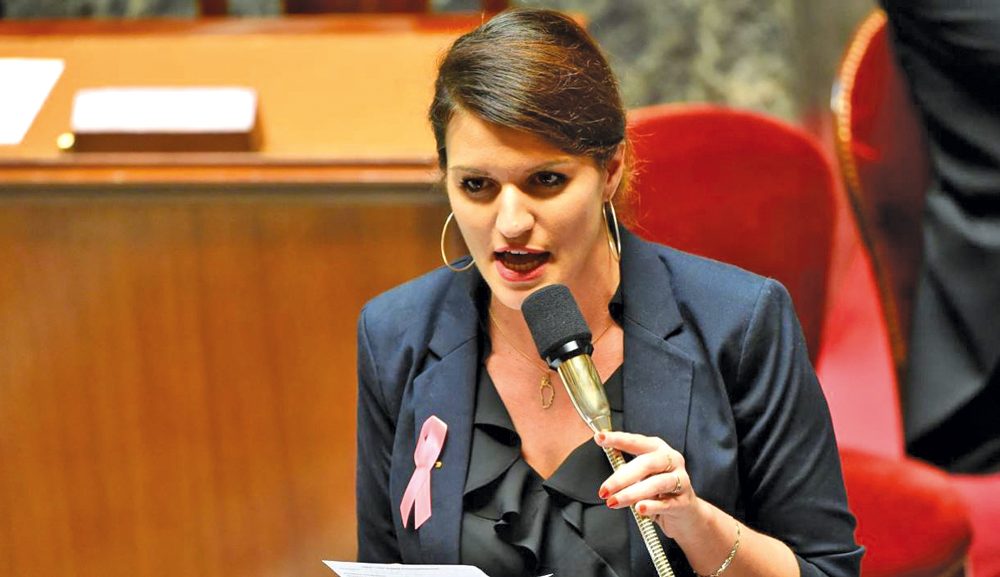Since the promulgation of the now famous Schiappa law, we have heard of legalization of pedophilia, implicit consent of minors ... Suffice to say that this is not at all that. But then where is the truth? What changes the law? Why all these fears? Where does the misunderstanding come from? To answer all these questions, we contacted Maître Nancy Pierre Louis, a criminal lawyer in Pointe-à-Pitre who took the time to decipher the Schiappa law for us.
A little contextual feedback is in order. The law bears the name of Marlène Schiappa, the Secretary of State responsible for equality between women and men, in office since May 17, 2017. Last August, the law that it bears was promulgated. The law, known as the Schiappa law, aims to strengthen the fight against sexual and gender-based violence. It is published in OJ n ° 0179 of August 5, 2018, you can easily find it on the web, on the Légifrance site. Maître Pierre Louis explains that it was for the legislator to strengthen and complete the tools to fight against sexual and gender-based violence. This law echoes various cases of pedophilia including one, particularly resounding, which involved an 11-year-old minor. At that time, unions and penalists said minors were not sufficiently protected, according to them. It is in this context that the first law is proposed. The part that poses so much problem today is article 2. In its first version, it provided for a presumption of rape when we were dealing with a minor victim and a major aggressor, whatever the age. No need to ask the question of consent, moral constraint was characterized by the age difference between the accused and the victim, among other things. This difference obviously implies the vulnerability and lack of judgment necessary for the victim. We do not always know it, but the legal texts all pass under the watchful and informed eye of the Constitutional Council. The aim is to prevent the judgment from being revised or overturned on procedural matters. However, the first version of this famous article 2 posed a problem. A concrete example to understand. Imagine an 11 year old girl dating a 15 year old boy. If the relationship lasts, the moment arrives when the young man is of legal age and the young girl is underage. In the first version of the law, the young man is presumed guilty of rape. We can see the concern. In this case, there is indeed a consent. It is absolutely not a rape. However, the law must apply in the same way for everyone. Clearly, either the article applies in all the cases which concern an adult individual vis-a-vis a minor or it is not constitutional. If the law had been kept as it is, the major risk would have been to see real pedophiles released. We explain to you! If a law presents an unconstitutional aspect, the lawyer of the presumed culprit has the possibility of requesting a QPC (priority question of constitutionality). This is where it hurts a lot if the legislator is light-hearted. The Constitutional Council examines only procedural matters, not the facts. So if the accused is really guilty but there is a constitutional loophole in the law, he will be released. This is the reason why the article was modified, to avoid opening a breach.
“It is not at all to legalize rape. »Master Nancy Pierre Louis
So where do the misunderstandings and fake news come from? Several elements played out. For purist penalists who have spoken on the issue, this aspect of the law does nothing for two reasons. First of all, the upstream survey already has this vocation. During the investigation, all the evidence is already checked. In addition, the significant age difference between a victim and his attacker is one of the fundamental elements that characterize coercion. If there is no presumption of rape from the outset, this means that the burden of proof rests with the minor victim. Moral restraint must be demonstrated, and this element seems outrageous to many. It was at this point that many associations and regulars of social networks switched to an emotional approach to the question without taking the time to read the text. From there, there remains only one step towards the slip that leads to saying that the minor is deemed consenting and that this is the door open to a free and assumed pedophilia.
"With the Schiappa law, even if rape is not characterized, we are forced to ask the question of sexual abuse and the penalties have been increased." Master Nancy Pierre Louis
As always, when the crowd ignites, we forget the important and even the essential. This new law brings some new tools which constitute real progress. First of all, the limitation period goes from 10 years to 30 years from the age of majority of the victim in the event of rape. And then, concerning the sexual attack, the punishment incurred is increased and goes from 5 years to 7 years. In addition, if the moral constraint is not characterized but the age difference is significant, the judges are now obliged to question the sexual abuse. Finally, the law provides for a new offense, sexist contempt which gives rise to a contravention. These are cases of sexual harassment including online harassment which did not give rise to any prosecution until today since the judges were not armed for the 2.0 era. Before the Schiappa law, they could not, most of the time, follow up on complaints that concerned harassment on social networks, for example. The Schiappa law now fills some gaps by offering new tools to judges. _NB
Master Nancy Pierre Louis
14, Quai Ferdinand de Lesseps
97110 Pointe a Pitre
cabinet@nplavocats.com
npl-lawyer.com
05.90.46.86.94
7,384 total views






You are in denial! Your goal is to put the population to sleep. You take us for idiots!
https://www.youtube.com/watch?v=H-8zmCkHpCc
http://www.francesoir.fr/politique-france/consentement-sexuel-des-mineurs-plus-de-500000-signatures-contre-la-loi-schiappa
https://www.sudouest.fr/2018/08/20/loi-schiappa-associations-et-professionnels-de-l-enfance-ne-decolerent-pas-5322477-10407.php